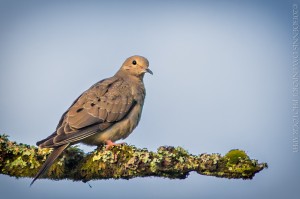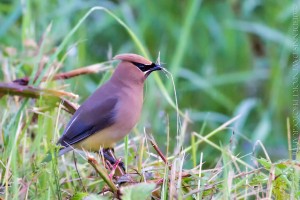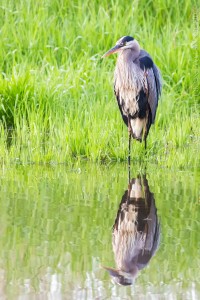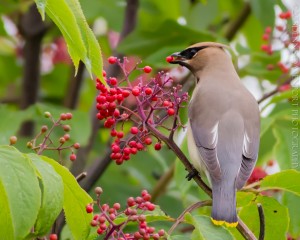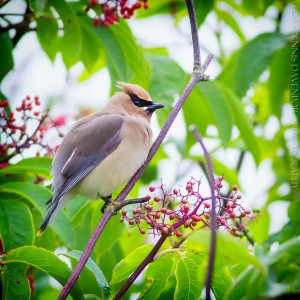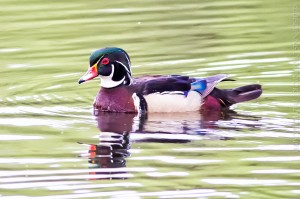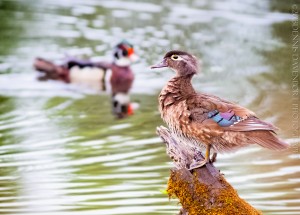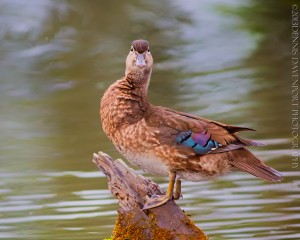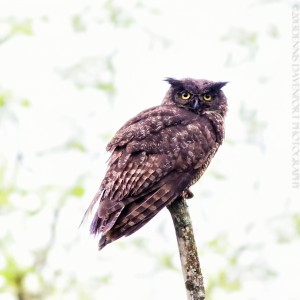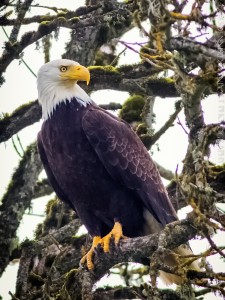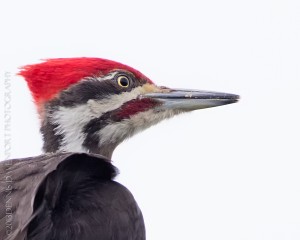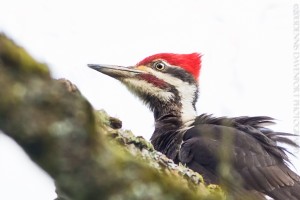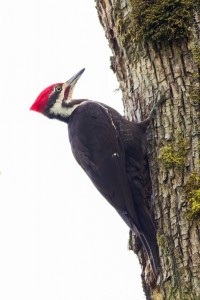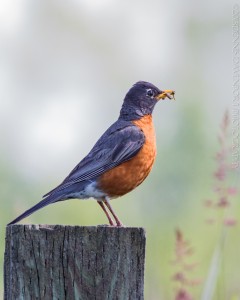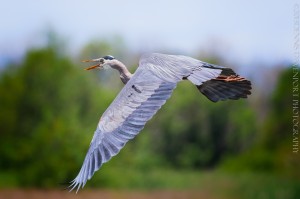Here’s a group of shots from back on May 31, 2013. I was getting a greater variety of birds back in the Spring compared to summertime. The Pileated Woodpecker–my previously crowned Nemesis Bird–is no longer that. Finally, after almost 7 years of shooting I came upon a Pileated Woodpecker at Ridgefield and at a very close range. So here’s a group of 3-month old springtime shots that I hope you’ll find enjoyable.
[Clicking on the thumbnails will download a larger more detailed view of the images].
First up is a Mourning Dove that was almost begging to get a picture taken. Canon 5D Mark III, 1/2000, f5.6, ISO 1600, Canon 400mm f5.6L lens. (6:22 a.m.)
This is one of many Cedar Waxwings I saw today. When it rains, it pours, it seems, since I rarely get a decent look at these birds. Usually, it’s because they are too high up in the trees. Canon 5D Mark III, 1/2000, f5.6, ISO 1600, Canon 400mm f5.6L lens. (6:32 a.m.)
Canon 5D Mark III, 1/1000, f5.6, ISO 1600, Canon 400mm f5.6L lens. (6:36 a.m.)
Canon 5D Mark III, 1/1000, f5.6, ISO 1600, Canon 400mm f5.6L lens. (6:36 a.m.)
A Great Blue Heron preening. Canon 5D Mark III, 1/1000, f5.6, ISO 2500, Canon 400mm f5.6L lens. (6:39 a.m.)
This next bird took me by surprise and just about flew over my truck. When I realized it was a male Northern Harrier, I did my best to get a few frames out the truck window. This one was the best of the lot and it is not very sharp. But this is such a cool bird and one that we see rarely at the refuge. Female harriers seem to be very common, however. Canon 5D Mark III, 1/1000, f5.6, ISO 2500, Canon 400mm f5.6L lens. (7:14 a.m.)
A couple more Cedar Waxwing shots with this one after some berries. Canon 5D Mark III, 1/640, f5.6, ISO 2500, Canon 400mm f5.6L lens. (7:26 a.m.)
Canon 5D Mark III, 1/640, f5.6, ISO 2500, Canon 400mm f5.6L lens. (7:26 a.m.)
A pair of Wood Ducks. Canon 5D Mark III, 1/640, f5.6, ISO 2500, Canon 400mm f5.6L lens. (7:31 a.m.)
And the female. Canon 5D Mark III, 1/640, f5.6, ISO 2500, Canon 400mm f5.6L lens. (7:33 a.m.)
Canon 5D Mark III, 1/1000, f5.6, ISO 2500, Canon 400mm f5.6L lens. (7:35 a.m.)
Canon 5D Mark III, 1/1000, f5.6, ISO 2500, Canon 400mm f5.6L lens. (7:35 a.m.)
I was in the Ash tree forest when I noticed another refuge visitor outside of his vehicle pointing down toward the water. I got out of my truck to see what he was looking at. This Great Horned Owl was taking a bath in the water but flew up to this nearby perch before I could get a shot off. Not the greatest lighting conditions but a beautiful bird nonetheless. Canon 5D Mark III, 1/1000, f5.6, ISO 2500, Canon 400mm f5.6L lens. (8:30 a.m.)
I then come across a Bald Eagle and should have reduced my ISO instead of reducing my shutter speed so much. I could have done a little of both and got a better quality shot. Canon 5D Mark III, 1/4000, f6.3, ISO 2500, Canon 400mm f5.6L lens. (8:54 a.m.)
Now I’m back at marker #2 at the beginning of another loop. On the left is a waterway that has many snags protruding up out of the water from just off the road, to hundreds of feet out. The tallest of these bare snags is nearest the road on my left. A lot of times blackbirds will be perched here. I approach in my truck and see a large black bird on the nearest, tallest perch. I immediately recognize it as my nemesis bird, the Pileated Woodpecker! The bird is busy jack hammering the snag causing pieces of wood to go flying. I approach to about 40 feet and get some shots, then I bravely start my engine and move closer, but over to the right side of the road. The bird stays on the snag and begins slowly climbing it, continually pecking away at it. I am so excited about this I again forget to reduce my ISO setting from 2500 down to something reasonable — like 800. I had the light to do this, but I ignored my settings and fired away. I just couldn’t believe I had this clear, open shot basically at the height of my camera of this bird I’ve been hunting for 6 years. The bird was even on the correct side of the snag! The planets were really lining up for me here–so who cares about camera settings?? 🙂 The woodpecker finally climbed all the way to the top of the snag, probably 15-18 feet and then took off heading southwest. The bird gave me 2 full minutes of shooting, which seemed like about 10 minutes! I missed getting any shots with wood chips flying and I wished I had gotten there just a bit earlier when the bird would have been low enough on the snag so that green tree bokeh would have adorned the background, rather than the white sky.
Canon 5D Mark III, 1/4000, f6.3, ISO 2500, Canon 400mm f5.6L lens. (9:08 a.m.)
So after the excitement of seeing the Pileated Woodpecker, I’m back to shooting Mallards. They are really quite beautiful ducks. Canon 5D Mark III, 1/1250, f6.3, ISO 1600, Canon 400mm f5.6L lens. (9:29 a.m.)
When the Pileated flew from the snag I mentioned above, it flew southwest, which is actually toward marker #9 in the Ash tree forest. Low and behold, just prior to marker #9, I spot the woodpecker again. This time it wasn’t in nearly as nice of a location for shots. But it was perched relatively low on a tree trunk. Again it was pecking away at the tree and moving up the trunk slowly. As it got higher, it became a little more visible, and I took what shots I could get. Below are a couple more shots and a video. The video shows the bird low on the tree trunk pecking away at the tree, but through some tall grass that was partially obscuring my view. At the end of the 1-minute video, the bird appears to have gotten what it was after.
Canon 5D Mark III, 1/1250, f5.6, ISO 1600, Canon 400mm f5.6L lens. (9:34 a.m.)
A bit later after the woodpecker had moved up higher in the tree. Canon 5D Mark III, 1/1250, f5.6, ISO 1600, Canon 400mm f5.6L lens. (9:46 a.m.) As you can see by the time stamps of these last two shots, the bird gave me at least 12 minutes to observe him at this location. From here the bird flew down past marker #9 and I was able to observe it for a few minutes more but the distance was too far for a shot. So after years of getting just fleeting glimpses of this bird, I get the show of my life in one-half hour’s time.
Be sure to change the quality setting to 1080p and watch in full screen mode!
And now we come to the American Robin on a post with some yummies in the bill. Canon 5D Mark III, 1/1250, f5.6, ISO 2500, Canon 400mm f5.6L lens. (10:05 a.m.)
Another Cedar Waxwing gives me a pose. Canon 5D Mark III, 1/3200, f5.6, ISO 1250, Canon 400mm f5.6L lens. (10:53 a.m.)
And to end today’s shoot, a flying away shot of a Great Blue Heron. I decided to post it since it was reasonably sharp, the head and eye were visible, and the bill is open, not to mention the nice wing detail. Good way to end the day!
Canon 5D Mark III, 1/2000, f5.6, ISO 1250, Canon 400mm f5.6L lens. (12:12 p.m.)
Thanks for stopping by to check out my pictures! Take care and I’ll see you next time on The Blog.
